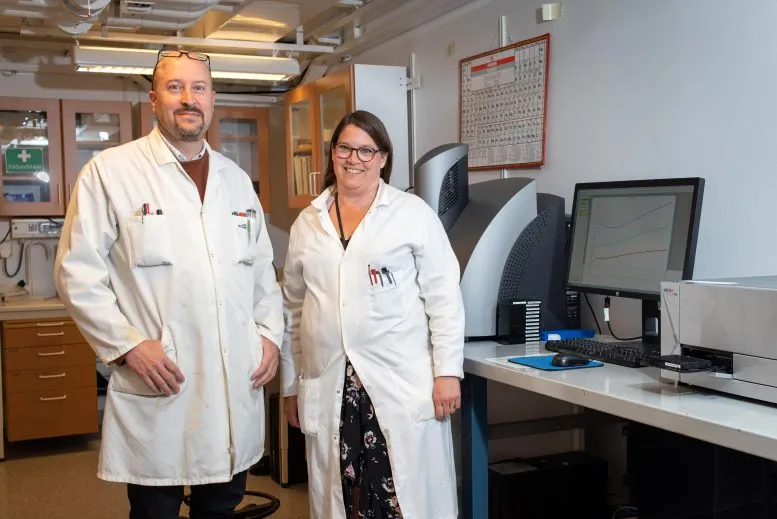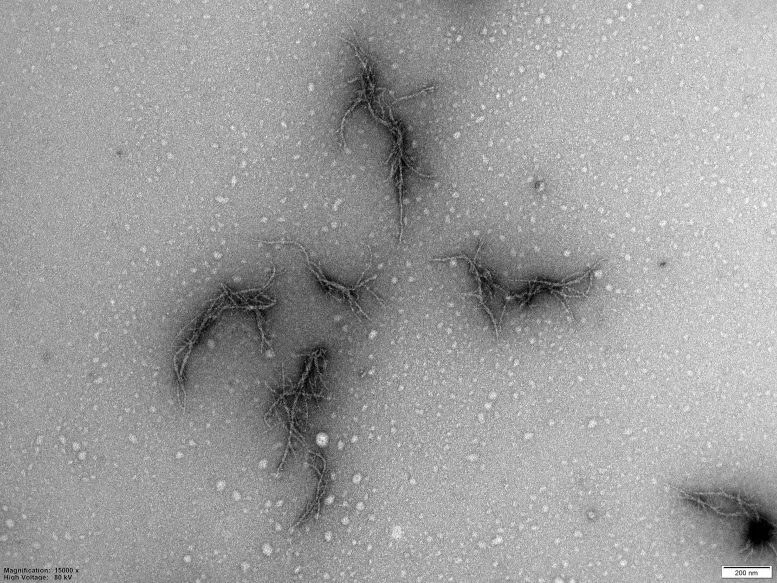Symptoms of blood coagulation are often observed in patients with severe and long-term covid-19. Now, researchers at Lim Xueping University (Liu) in Sweden have found that the body's immune system can affect the spike protein on the surface of sars-cov-2 virus, resulting in the production of a misfolded spike protein called amyloid protein. The discovery of a possible link between harmful amyloid production and covid-19 symptoms has now been published in the Journal of the American Chemical Society.

In people with severe and long-term covid-19, organs other than the lungs may be seriously affected. For example, complex symptoms and damage to the heart, kidneys, eyes, nose and brain, as well as disorders of blood coagulation, sometimes persist. Why the disease affects the body in this way is largely a mystery. Now, Liu's researchers have discovered a biological mechanism that has never been described before, which may be part of the explanation.
The team studied diseases caused by misfolded proteins, of which Alzheimer's disease in the brain is the most famous example. The scientists point out that the symptoms associated with covid-19 have many similarities with those observed in diseases caused by misfolded proteins.

Sofie Nystr ö m and per hammarstr ö m of Lin Xueping University
The function of proteins is strongly influenced by the fact that proteins fold in a specific way, resulting in a specific three-dimensional structure. In addition to this shape, proteins can take another shape. More than 30 different proteins are known to have this alternative form, which is related to the disease. This alternative folding protein is called amyloid. Liu's researchers wanted to know whether sars-cov-2, the virus that causes covid-19, contains a protein that produces amyloid. They were particularly interested in the spike protein on the surface of the virus, which the virus uses to interact with the body's cells and infect them.
Using computer simulation, the researchers found that the spike protein of coronavirus contains seven different sequences, which may produce amyloid protein. In the experimental test, three of the seven sequences met the researchers' criteria and were counted as the sequences producing amyloid. Among other things, they produce so-called cellulose, which looks like long lines when examined under an electron microscope.

An electron microscope was used to see a picture of amyloid protein from spike protein of sars-cov-2 virus. When spike protein is mixed with neutrophil elastase in a test tube, it will produce branched chain protein fibers, which may lead to the disorder of blood coagulation mechanism in patients with covid-19
But is this cellulose produced spontaneously? As we all know, many diseases, such as Alzheimer's disease, have a process before, that is, the body cuts large proteins into small pieces, which will produce harmful amyloid protein. In their study, the researchers showed that an enzyme from white blood cells of the immune system can cut the spike protein of coronavirus. According to the researchers' analysis, when the spike protein is cut, it produces the protein most likely to produce amyloid. The enzyme is released in large quantities from neutrophils, a kind of white blood cells, and is released early in the process of infection such as covid-19. When the researchers mixed pure spike protein with an enzyme called neutrophil elastase, unusual cellulose was produced.
"We've never seen such perfect but terrible cellulose, like the cellulose from the sars-cov-2 spike protein and its fragments that produce amyloidosis. The cellulose starting from the full-size spike protein branches like the limbs of the body. Amyloid usually doesn't branch like this." "We think this is determined by the characteristics of spike proteins," said per hammarstr ö m, a professor in the Department of physics, chemistry and Biology (IFM) of Lin Xueping University

Sofie Nystr ö m and per hammarstr ö m of Lin Xueping University
Previous studies, including a study by South African researchers, have shown that spike protein may be involved in the production of small blood clots. Blood contains fibrin. When blood vessels are damaged, fibrin can help blood clot, so as to reseal the holes and stop bleeding. When the injury begins to heal, the clot should be broken down by plasma protein, which is also present in the blood.
Liu's researchers mixed the amyloid producing fragment of spike protein with these body substances in a test tube and saw that the subsequent fibrin coagulate could not be broken down by plasma protein in the usual way. The mechanism of this new discovery may lie in the production of similar micro blood clots, which have been observed in both severe and long-term covid-19. Disorders of blood coagulation are also seen in many amyloid related diseases.
"We can see that spike protein can produce amyloid structure when affected by our own immune system, which may affect our blood coagulation. We believe this discovery is of great significance in many research fields, and we hope other researchers can study the problems it raises," said Sofie Nystr ö m, an associate professor of IFM and another author of the study.